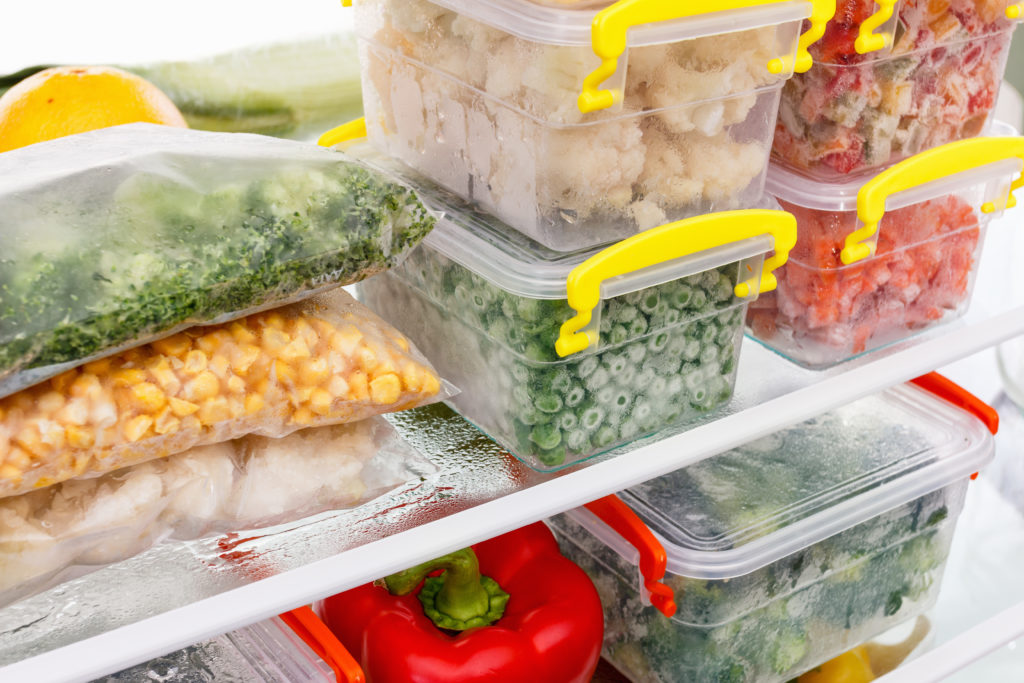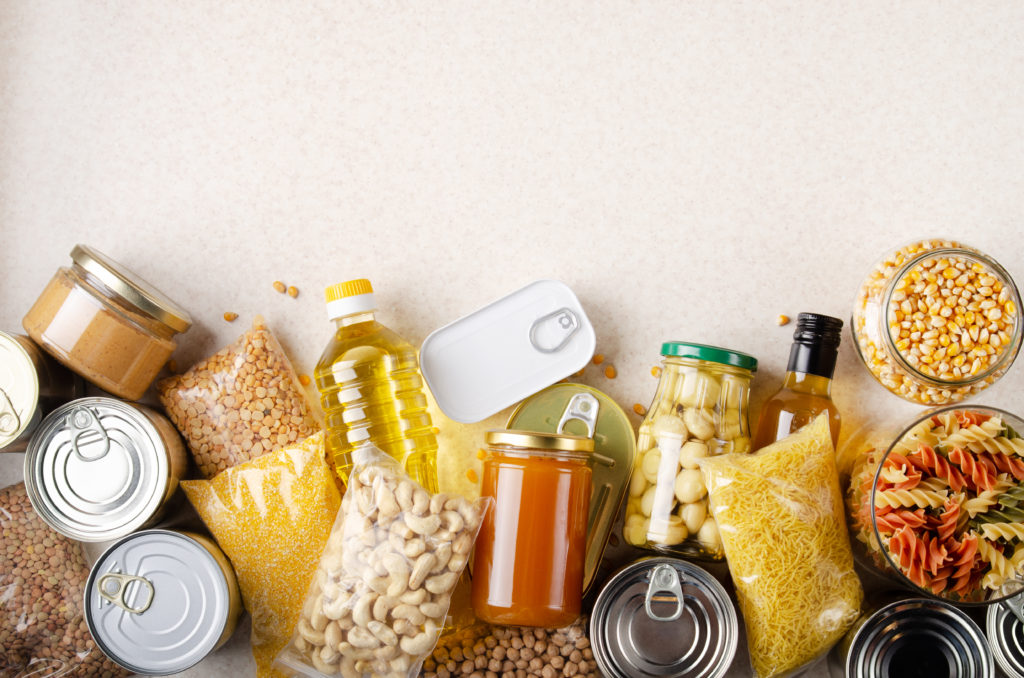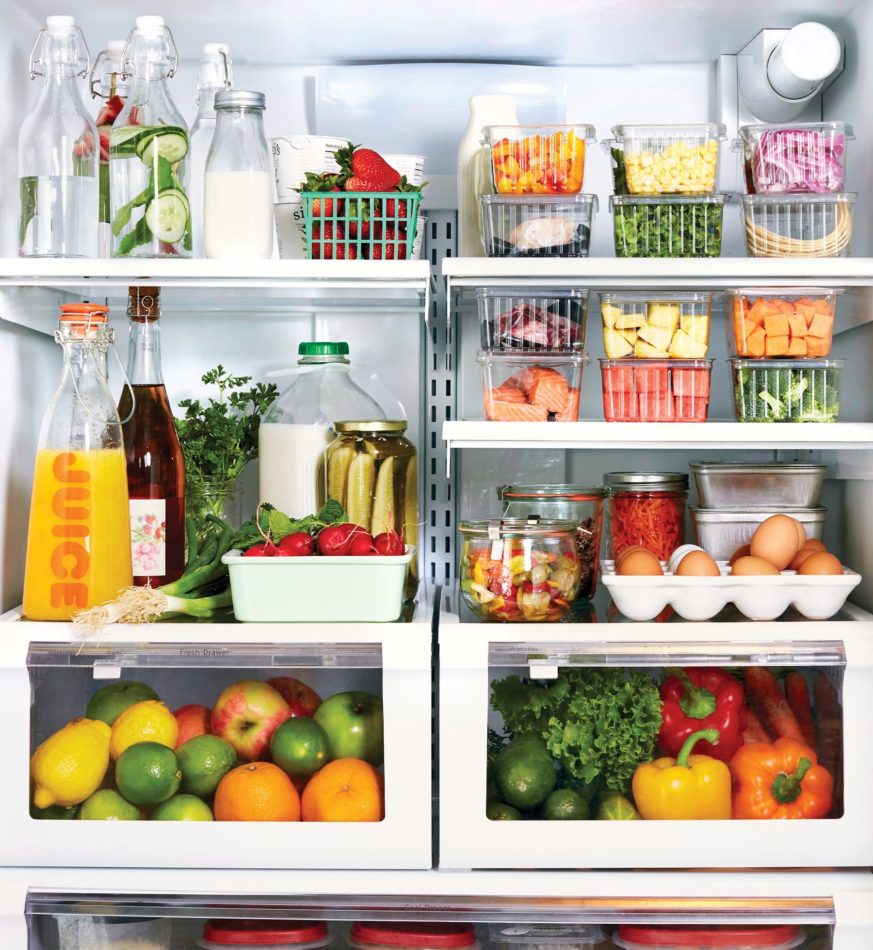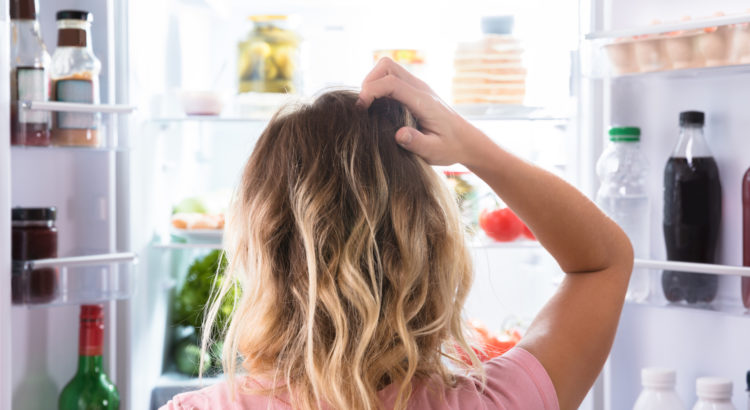If you are new to meal prepping and planning, it is normal to feel overwhelmed, anxious, and confused about where to start. The important thing to remember is that with a little practice, you’ll be an efficient meal-planning machine.
Now, where to begin?
A great place to start, before you even step foot in the grocery store or chop up some veggies, is by cleaning up your freezer, fridge, and pantry to accommodate room for new, health-promoting ingredients.

Let’s start with your fridge and freezer.
Look through both to find anything that it might be time to part with. Yep – even examine that scary section at the back of the fridge and deep in the dark, frozen, lifeless abyss of the freezer.
- Check expiration dates on the products you find. If any foods are past the point of no return, chuck ‘em!
- It might be helpful to organize both the fridge and freezer in a way that saves space and is organized in a way that makes sense so you know exactly what is where, and don’t accidentally purchase items you already have.

Now, let’s move on to the pantry.
- Once again, look through your pantry, and check expiration dates on the products you find. Dispose of anything no longer safe to eat.
- If you find that you have canned or dried goods that you aren’t planning to eat, a great alternative to throwing them away is to donate them to a local food pantry or shelf.
- Similar to the fridge and freezer, organize your pantry in a way that makes sense and that you can easily see what you have.
- Look through your spices as well, and smell them! If you find they’ve lost their scent, that’s a good sign that they’ve also lost their nutritional benefit, and it’s time to replace them.

Just because fresh, whole food ingredients should be the center of your diet, doesn’t mean that you can’t eat any convenience items! Frozen and canned goods are hugely convenient especially when time is of the essence.
Which ones should you hold onto? Canned and frozen fruits, vegetables, and legumes can all be part of a healthy diet.
Here are some things to look for:
- Few ingredients!
- Always check the ingredient label. The fewer the ingredients, the better. In fact, most of these items should have only 1 – 3 ingredients. For example: a can of black beans should really only contain black beans, salt and water. Try to avoid products that have funky ingredients you can’t pronounce!
- BPA-free cans.
- The linings of cans often contain bisphenol-A (BPA), which is a toxic chemical that is harmful for human health. Look for cans that state “BPA-free lining.”
- Drain and rinse!
- Canned goods are often VERY high in sodium. To ensure you aren’t consuming too much sodium , always drain and rinse canned foods prior to consuming.
- Store in a different container.
- Once you open a canned good, make sure to store any leftovers in a separate container. Exposure to oxygen will not only reduce the longevity and freshness of the product, but metal from the can may leach into your food, which is a health concern.
- Organic when possible.
- While it may not be feasible to purchase organic products all the time (and that’s okay!), some organic frozen/canned items are comparable in cost to their non-organic counterparts., The organic version can reduce your exposure to pesticides and toxins as well.
And there you have it! By following these recommendations, you will be well on your way to the next step of your meal prepping journey, which is stocking your kitchen with the proper meal prepping equipment!
